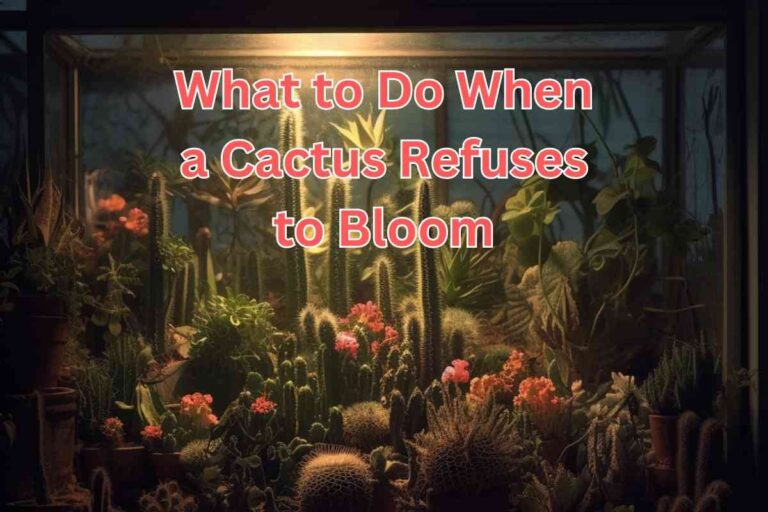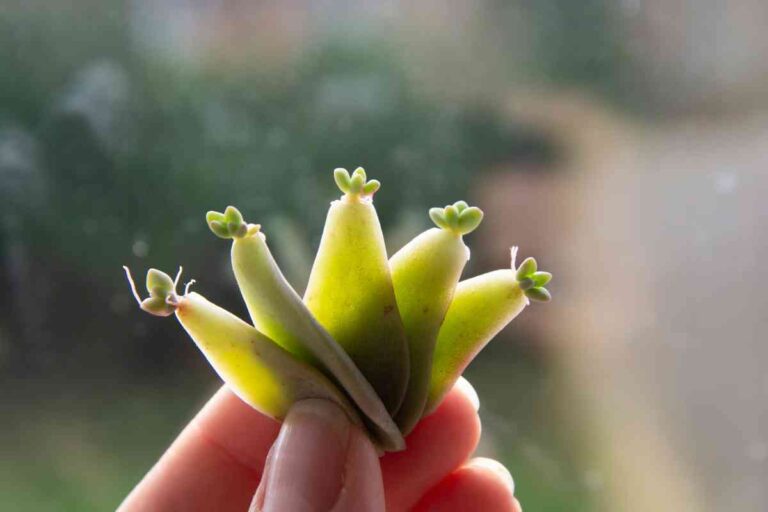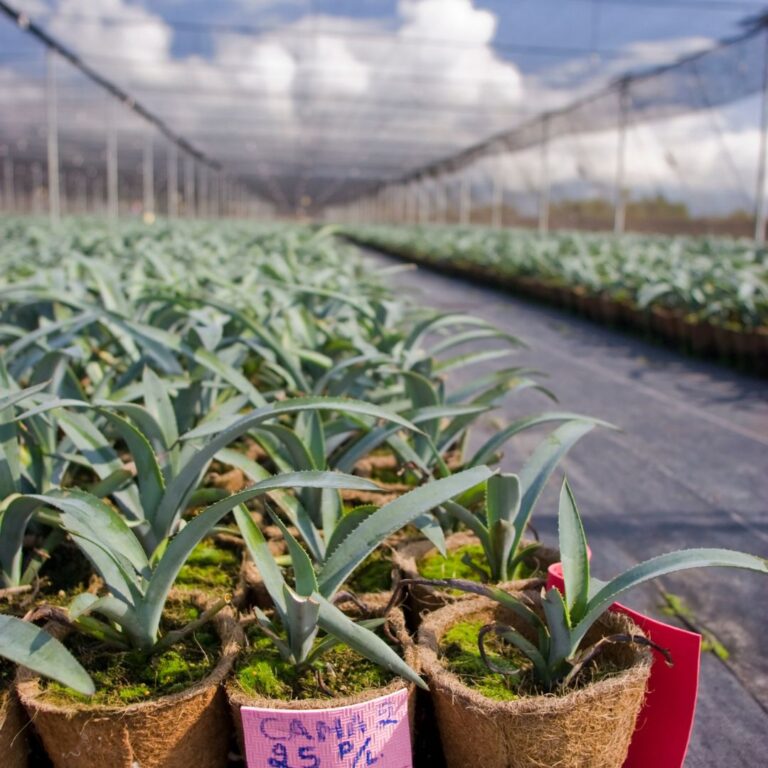Rosa Rugosa Therese Bugnet: Characteristics and Growing Tips
Rosa Rugosa Therese Bugnet Overview
Rosa rugosa Therese Bugnet is a popular shrub rose cultivar known for its hardiness, vigorous growth, and disease resistance. It is a hybrid of Rosa rugosa and a hybrid tea rose, and was developed by Georges Bugnet in Canada in the 1950s.
This rose has a bushy habit and can grow up to 6 feet in height and spread up to 5 feet wide. The foliage is dark green and glossy, and the flowers are large and fragrant with a deep pink color. The blooms appear in early summer and continue to bloom throughout the season.
Rosa rugosa Therese Bugnet is a versatile plant that can be grown as a shrub, a hedge, or a climber. It is also suitable for growing in containers. This rose is very hardy and can tolerate cold temperatures, making it a popular choice for gardeners in colder climates.
| Entity | Description |
|---|---|
| Rosa rugosa | A species of rose native to eastern Asia, known for its hardiness and disease resistance. |
| Therese Bugnet | A popular hybrid shrub rose cultivar developed by Georges Bugnet in Canada in the 1950s. |
| Shrub | A woody plant that is smaller than a tree and has multiple stems. |
| Hardy | Able to withstand cold temperatures and harsh conditions. |
| Vigorous | Growing quickly and strongly. |
| Height | The measurement from the base of the plant to the top. |
| Bush | A woody plant with multiple stems that grows to a moderate height. |
| Climber | A plant that grows upward by attaching itself to a support. |
| Tree | A woody plant with a single stem that grows to a significant height. |
| Habit | The growth pattern or form of a plant. |
Growth and Hardiness
Rosa rugosa ‘Thérèse Bugnet’ is a hardy shrub rose that is known for its vigorous growth and ability to tolerate cold temperatures. It is rated as hardy to USDA hardiness zone 3, which means it can survive winter temperatures as low as -40°F (-40°C).
During the growing season, Rosa rugosa ‘Thérèse Bugnet’ produces an abundance of fragrant pink flowers that attract pollinators. Its root system is deep and extensive, which makes it a good choice for erosion control and stabilizing slopes.
In terms of frost tolerance, Rosa rugosa ‘Thérèse Bugnet’ has been shown to be more frost-resistant than some other rose cultivars. A study evaluating 21 cultivars derived from Rosa rugosa found that ‘Thérèse Bugnet’ had a high level of frost tolerance, making it a good choice for colder climates where frost is a limiting factor for rose growing [1].
| Entity | Information |
|---|---|
| Hardiness | Rated as hardy to USDA hardiness zone 3 |
| Zone 3 | Can survive winter temperatures as low as -40°F (-40°C) |
| Winter | Able to tolerate cold temperatures |
| Hardiness zone | Suitable for colder climates |
| Frost | More frost-resistant than some other rose cultivars |
| Growing season | Produces an abundance of fragrant pink flowers |
| Root system | Deep and extensive, good for erosion control and stabilizing slopes |
Overall, Rosa rugosa ‘Thérèse Bugnet’ is a hardy and reliable shrub rose that can thrive in a variety of growing conditions. Its ability to tolerate cold temperatures and extensive root system make it a good choice for gardeners looking for a low-maintenance and attractive plant.
[1] https://www.horticultureresearch.net/jah/2017_19_1_67_69.PDF
Flowering and Fragrance
Rosa rugosa ‘Therese Bugnet’ is a hybrid cultivar that produces large, double, medium pink loosely clustered and very fragrant flowers. The blooms have a strong fragrance that can be smelled from a distance, making it an excellent choice for gardens and landscapes where scent is important.
The bloom time for ‘Therese Bugnet’ is typically in early summer, but it can also produce flushes of flowers throughout the growing season. This extended bloom time makes it a popular choice for gardeners who want to enjoy the beauty and fragrance of roses for as long as possible.
The pink flowers of ‘Therese Bugnet’ are not only beautiful but also have a strong fragrance. The fragrance is sweet and spicy, with a hint of clove and cinnamon. It is a fragrance that is both pleasant and invigorating, making it a popular choice for cut flowers and perfumes.
Here is a table summarizing the key characteristics of ‘Therese Bugnet’:
| Characteristic | Description |
|---|---|
| Flower Color | Medium pink |
| Flower Form | Large, double |
| Fragrance | Strong, sweet and spicy with hints of clove and cinnamon |
| Bloom Time | Early summer with flushes throughout the growing season |
Overall, ‘Therese Bugnet’ is an excellent choice for gardeners who want a beautiful and fragrant rose that will bloom for an extended period. Its pink flowers and strong fragrance make it a popular choice for cut flowers, perfumes, and gardens.
Planting and Care
Planting and caring for Rosa rugosa ‘Thérèse Bugnet’ is relatively easy. Here are some tips to ensure your plant thrives:
Sun and Spacing
Rosa rugosa ‘Thérèse Bugnet’ grows best in full sun, which means at least six hours of direct sunlight per day. It can tolerate partial shade, but this may result in fewer flowers. When planting, make sure to space the plants at least 3 to 4 feet apart to allow for proper air circulation and growth.
Soil and Compost
Rosa rugosa ‘Thérèse Bugnet’ prefers well-drained soil that is rich in organic matter. If your soil is heavy or clay-like, consider adding compost or other organic matter to improve drainage and soil quality.
Containers
Rosa rugosa ‘Thérèse Bugnet’ can also be grown in containers, which is a great option for those with limited garden space. When planting in containers, make sure to use a well-draining potting mix and choose a container that is at least 18 inches in diameter.
Disease Resistance
Rosa rugosa ‘Thérèse Bugnet’ is known for its disease resistance, making it a great choice for gardeners who want a low-maintenance plant. However, it is still important to keep an eye out for common rose diseases such as black spot and powdery mildew.
Care
In terms of care, Rosa rugosa ‘Thérèse Bugnet’ requires minimal pruning. Deadheading spent blooms will encourage more flowers to grow. Fertilization is not necessary, but a light application of compost or organic fertilizer in early spring can help promote healthy growth.
Blooming
Rosa rugosa ‘Thérèse Bugnet’ blooms in early summer, producing large, fragrant, pink flowers that are attractive to bees and other pollinators.
Here’s a table summarizing the planting and care requirements for Rosa rugosa ‘Thérèse Bugnet’:
| Sun Exposure | Soil Type | Spacing | Container Size | Disease Resistance | Bloom Time |
|---|---|---|---|---|---|
| Full sun | Well-drained | 3-4 feet apart | At least 18 inches in diameter | Disease resistant | Early summer |
Buying Guide
When buying Rosa rugosa Thérèse Bugnet, there are a few things to consider to ensure that you are getting the best product for your garden.
Choosing the Best Product
First, decide whether you want to buy patented or non-patented plants. Patented plants are protected by law and cannot be propagated without permission. Non-patented plants, on the other hand, can be propagated freely.
Next, look for healthy plants with no signs of disease or pest infestations. Check the leaves, stems, and flowers for any discoloration, spots, or deformities. Also, make sure the plant is the right size for your garden and has a strong root system.
Features to Look For
When choosing Rosa rugosa Thérèse Bugnet, look for the following features:
-
Disease resistance: Thérèse Bugnet is known for its disease resistance, so make sure the plant you choose has this trait.
-
Fragrance: Thérèse Bugnet has a strong, sweet fragrance, so look for plants with a similar scent.
-
Bloom time: Thérèse Bugnet blooms in early summer, so make sure the plant you choose has a similar bloom time.
-
Size: Thérèse Bugnet is a shrub rose that can grow up to 6 feet tall and wide, so make sure the plant you choose has enough space to grow.
Table: Patented vs. Non-Patented Plants
| Feature | Patented Plants | Non-Patented Plants |
|---|---|---|
| Propagation | Cannot be propagated without permission | Can be propagated freely |
| Availability | Limited availability | Widely available |
| Cost | Higher cost due to licensing fees | Lower cost |
In summary, when buying Rosa rugosa Thérèse Bugnet, look for healthy plants with disease resistance, a strong fragrance, and a similar bloom time to Thérèse Bugnet. Consider whether you want to buy patented or non-patented plants, and make sure the plant you choose is the right size for your garden.
Tools and Equipment
When it comes to growing and caring for Rosa rugosa Therese Bugnet, having the right tools and equipment can make all the difference. Here are some essential items to have on hand:
Pruning Tools
Pruning is an essential part of maintaining the health and appearance of your Rosa rugosa Therese Bugnet. You will need a few basic pruning tools, including:
- Pruning shears: Used for cutting branches up to 1/2 inch in diameter.
- Loppers: Used for cutting branches up to 2 inches in diameter.
- Pruning saw: Used for cutting branches larger than 2 inches in diameter.
Soil Testing Equipment
To ensure that your Rosa rugosa Therese Bugnet is getting the nutrients it needs, it’s important to test the soil periodically. Here are a few tools that can help:
- Soil pH meter: Measures the acidity or alkalinity of the soil.
- Soil test kit: Tests the soil for nutrients such as nitrogen, phosphorus, and potassium.
Watering Tools
Proper watering is essential for the health of your Rosa rugosa Therese Bugnet. Here are a few tools that can help:
- Watering can: Used for watering small areas or individual plants.
- Hose: Used for watering larger areas or multiple plants at once.
- Sprinkler: Used for watering larger areas or for even distribution of water.
Other Tools
Here are a few additional tools that can come in handy when growing and caring for Rosa rugosa Therese Bugnet:
- Gloves: Protect your hands while pruning or handling thorny branches.
- Trowel: Used for planting and transplanting.
- Mulch: Helps retain moisture in the soil and suppress weeds.
Having the right tools and equipment can make caring for Rosa rugosa Therese Bugnet easier and more efficient. Make sure to invest in quality tools that will last for years to come.
Unique Characteristics
Rosa rugosa ‘Thérèse Bugnet’ is a beautiful and hardy shrub rose with unique characteristics that make it stand out from other rose varieties.
Thorny
One of the most noticeable characteristics of ‘Thérèse Bugnet’ is its thorny stems, which are covered in sharp, needle-like thorns. These thorns can make pruning and handling the plant a bit challenging, but they also provide some protection against pests and animals that might try to damage the plant.
Beauty
Despite its thorns, ‘Thérèse Bugnet’ is a stunningly beautiful rose variety that is sure to catch the eye of any gardener or passerby. Its large, fragrant, pink blooms are a sight to behold, and they are sure to add a touch of elegance and beauty to any garden or landscape.
Attraction
In addition to its beauty, ‘Thérèse Bugnet’ is also known for its ability to attract pollinators like bees and butterflies. These insects are drawn to the plant’s sweet fragrance and bright, colorful blooms, making it a great choice for gardeners who want to support local pollinator populations.
To summarize, ‘Thérèse Bugnet’ is a thorny yet beautiful rose variety that is both attractive to pollinators and hardy enough to thrive in a variety of growing conditions.
| Characteristics | Description |
|---|---|
| Thorny | Covered in sharp, needle-like thorns |
| Beauty | Stunningly beautiful with large, fragrant, pink blooms |
| Attraction | Attracts pollinators like bees and butterflies |
Hybrid Rugosa
Rosa rugosa is a species of rose native to East Asia. It is known for its hardiness and disease resistance, making it a popular choice for gardeners. One of the most popular cultivars of Rosa rugosa is the hybrid rugosa named Thérèse Bugnet.
Introduced in 1950 by Georges Bugnet, a Canadian horticulturist, Thérèse Bugnet is a cross between Rosa rugosa and an unknown cultivar. It is a vigorous shrub that can grow up to 2 meters in height and width. Its flowers are large, double, and fragrant, and bloom in early summer. The petals are pink in color, fading to a lighter shade towards the center.
Hybrid rugosas like Thérèse Bugnet have many desirable characteristics, including their hardiness, disease resistance, and tolerance to salt spray. They are also known for their ability to bloom repeatedly throughout the growing season.
Here is a table summarizing some of the key characteristics of Thérèse Bugnet:
| Characteristic | Description |
|---|---|
| Height | Up to 2 meters |
| Width | Up to 2 meters |
| Flower color | Pink |
| Flower type | Double |
| Fragrance | Yes |
| Blooming period | Early summer |
| Hardiness | Very hardy |
| Disease resistance | High |
| Salt tolerance | High |
Overall, hybrid rugosas like Thérèse Bugnet are a great choice for gardeners looking for a hardy, disease-resistant rose that can bloom repeatedly throughout the growing season.
Rosa Rugosa in Different Regions
Rosa rugosa is a species of rose that is native to eastern Asia. It is a hardy plant that is resistant to many pests and diseases, making it a popular choice for gardens and landscaping. One of the most popular cultivars of Rosa rugosa is Thérèse Bugnet, which is known for its fragrant pink flowers and disease resistance.
Rosa rugosa is grown in many different regions around the world, including North America, Europe, and Asia. In each region, the plant may have different characteristics and may be used for different purposes. For example, in Pennsylvania, Rosa rugosa is often used as a hedge or border plant, due to its hardiness and ability to withstand harsh weather conditions.
In other regions, Rosa rugosa may be used for different purposes. In Japan, for example, the plant is often used in traditional medicine, due to its anti-inflammatory and antioxidant properties. In China, Rosa rugosa is used to make tea, which is believed to have a number of health benefits.
Overall, Rosa rugosa is a versatile plant that can be grown in many different regions and used for a variety of purposes. Its hardiness, disease resistance, and beauty make it a popular choice for both gardeners and landscapers.
| Region | Characteristics |
|---|---|
| North America | Often used as a hedge or border plant due to its hardiness |
| Europe | Grown for its beauty and fragrance |
| Asia | Used in traditional medicine and to make tea for its health benefits |
Frequently Asked Questions
What kind of rose is Thérèse Bugnet?
Thérèse Bugnet is a shrub rose that was first introduced in 1950 by Georges Bugnet. It is a hybrid rugosa rose that is known for its disease resistance and hardiness.
How do you take care of a Thérèse Bugnet rose?
Thérèse Bugnet roses are relatively easy to care for. They prefer full sun and well-drained soil. They are also quite hardy and can tolerate a range of temperatures. Pruning should be done in late winter or early spring, and deadheading spent blooms can encourage more blooms to grow.
What is the Thérèse Bugnet rose in Dave’s garden?
Dave’s Garden is a website that provides information and resources for gardeners. They have a plant database that includes information on Thérèse Bugnet roses, including user reviews and photos.
Who is Thérèse Bugnet?
Thérèse Bugnet was a French-Canadian woman who lived in Alberta, Canada. She was a plant breeder and developed several varieties of hardy roses, including the Thérèse Bugnet rose.
Is there a rose called Teresa?
There are many different varieties of roses, and it is possible that there is a rose named Teresa. However, Thérèse Bugnet is a specific variety of rose that is known for its hardiness and disease resistance.
What is the deer resistance of Thérèse Bugnet rose?
Thérèse Bugnet roses are known for their deer resistance. They have tough, thorny stems and leaves that are not attractive to deer. However, it is important to note that no plant is completely deer-proof, and deer may still eat Thérèse Bugnet roses if they are hungry enough.
Thérèse Bugnet is a shrub rose that was first introduced in 1950 by Georges Bugnet. It is a hybrid rugosa rose that is known for its disease resistance and hardiness.
“}},{“@type”:”Question”,”name”:”How do you take care of a Thérèse Bugnet rose?”,”acceptedAnswer”:{“@type”:”Answer”,”text”:”
Thérèse Bugnet roses are relatively easy to care for. They prefer full sun and well-drained soil. They are also quite hardy and can tolerate a range of temperatures. Pruning should be done in late winter or early spring, and deadheading spent blooms can encourage more blooms to grow.
“}},{“@type”:”Question”,”name”:”What is the Thérèse Bugnet rose in Dave’s garden?”,”acceptedAnswer”:{“@type”:”Answer”,”text”:”
Dave’s Garden is a website that provides information and resources for gardeners. They have a plant database that includes information on Thérèse Bugnet roses, including user reviews and photos.
“}},{“@type”:”Question”,”name”:”Who is Thérèse Bugnet?”,”acceptedAnswer”:{“@type”:”Answer”,”text”:”
Thérèse Bugnet was a French-Canadian woman who lived in Alberta, Canada. She was a plant breeder and developed several varieties of hardy roses, including the Thérèse Bugnet rose.
“}},{“@type”:”Question”,”name”:”Is there a rose called Teresa?”,”acceptedAnswer”:{“@type”:”Answer”,”text”:”
There are many different varieties of roses, and it is possible that there is a rose named Teresa. However, Thérèse Bugnet is a specific variety of rose that is known for its hardiness and disease resistance.
“}},{“@type”:”Question”,”name”:”What is the deer resistance of Thérèse Bugnet rose?”,”acceptedAnswer”:{“@type”:”Answer”,”text”:”
Thérèse Bugnet roses are known for their deer resistance. They have tough, thorny stems and leaves that are not attractive to deer. However, it is important to note that no plant is completely deer-proof, and deer may still eat Thérèse Bugnet roses if they are hungry enough.
“}}]}





